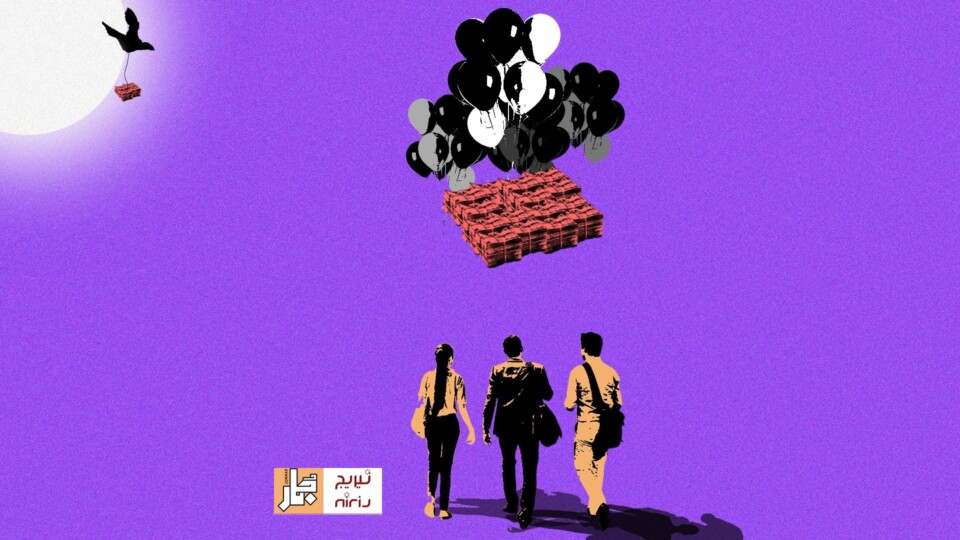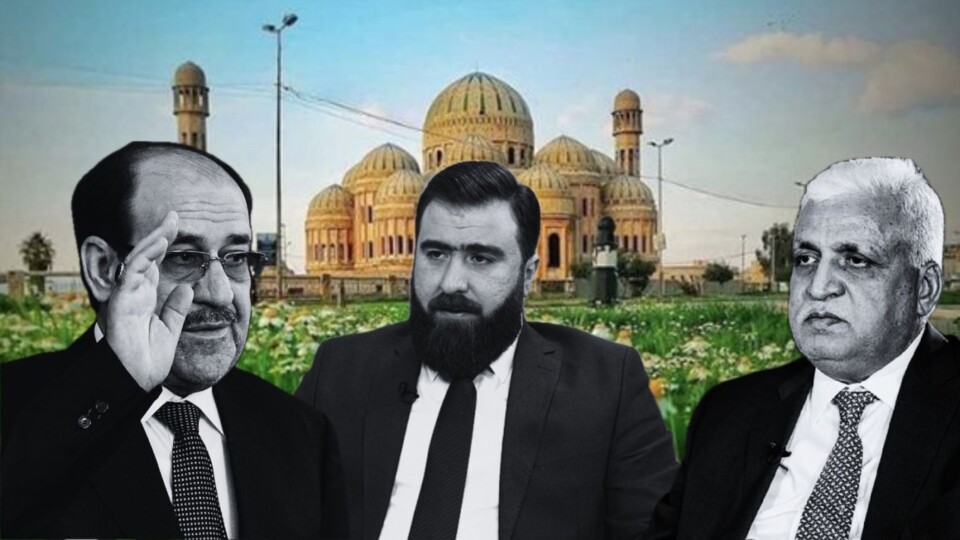In a state of contradictory figures and the absence of thorough studies and expertise, political forces are preoccupied with the impasse of the federal budget project, which has been repeated over the course of 20 years, and represents a great gain for power hubs and their parties.
The post-2003 regime opened the doors of the state to political improvisation, culminating in the recent submission of a three-year draft federal budget (2023-2025) by the government of Mohammed Shi’a al-Sudani to parliament. This action somewhat alleviates the government from the pressures exerted by parliament and its political factions, which subject every paragraph of the budget law to trade-offs.
In public finance, four principles dictate the budget preparation process. The primary objective is to enable legislative authorities to effectively oversee the budget, particularly given that all economic indicators are assessed annually. These variables include economic growth rates, employment figures, poverty levels, and debt metrics. Organizing them on an annual basis ensures precision in forecasting both expenditures and revenues.
Despite the government’s portrayal of the budget as a savior bringing reform and transformative change to Iraq’s underdeveloped economy, it falls short of these claims. In reality, the three-year budget is rather simplistic, with figures from the initial year merely repeated in the subsequent two years. While the first year’s figures are obligatory, those of the following years are open to modification. Moreover, the Council of Ministers has only transmitted a summarized version of the budget to the Council of Representatives, devoid of detailed tables outlining expenditures and revenues, which are of crucial significance.
Historically, this contentious budget marks Iraq’s largest to date, totaling over 197 trillion dinars for the initial year (equivalent to more than 151 billion dollars). This figure surpasses the 2021 budget by 53 percent, amounting to an increase of 68 trillion dinars. Furthermore, it exceeds the actual expenditures for 2022 by approximately 81 trillion dinars. Operating expenses alone stand at 150 trillion dinars, reflecting a 50 trillion dinars surge over the 2021 budget and surpassing the actual operating expenses for 2022 by roughly 46 trillion dinars.
As a budget of unprecedented scale, it carries a deficit surpassing 64 trillion dinars, making it the largest in the country’s history. Approximately two-thirds of this deficit is financed through a combination of external and internal borrowing, with the remainder dependent on surplus funds managed by the Ministry of Finance. It’s worth noting that the proposed deficit for the 2021 budget stood at 50 trillion dinars before parliamentary adjustments reduced it to less than 29 trillion dinars.
As part of the pursuit of rentierism, the emphasis on salary and social welfare allocations persists and expands, accounting for a staggering 87 trillion dinars. This sum constitutes 58 percent of total operating expenditures and 74 percent of oil revenues. Additionally, the budget adopts an imprudent planning oil price of $70 per barrel, surpassing the price set in the 2021 budget, which stood at $45 per barrel. This figure exceeds the oil price projections of many other oil-producing nations.
To grasp the risks associated with this decision, a mere one-dollar decrease from the budgeted oil price would result in a reduction of approximately 1.660 trillion dinars in annual revenues. Such a scenario would exacerbate the budget deficit and amplify both internal and external debts. This concern is heightened by the fact that, unlike many other oil-producing nations, Iraq lacks a sovereign fund to serve as a buffer in such circumstances.
The draft budget demonstrates an excessively optimistic outlook regarding non-oil revenues, estimated at 17 trillion dinars. However, in 2022, these revenues did not surpass 7 trillion dinars. Furthermore, their potential decline is imminent if the parliament fails to approve the tax package outlined in the budget. This shortfall would result in a larger deficit, complicating efforts to cover operational and other expenses.
For two decades, successive Iraqi administrations have struggled to regulate non-oil revenue streams effectively. The most recent zero-sum attempt took place under the leadership of former Prime Minister Mustafa al-Kadhimi, who initiated a widely publicized “significant” campaign aimed at managing border crossings. However, the efforts yielded no tangible results due to the significant power imbalances between the government and influential political, military, and ideological entities overseeing these crossings.
Government Employment Expansion
Within the framework of the three-year budget, operational expenditures take precedence, totaling 150 trillion dinars. Even after factoring in anticipated oil revenues of 117 trillion dinars and incorporating the managed balance held by the Ministry of Finance (23 trillion dinars), there remains a deficit of 10 trillion dinars to cover operational expenses. This deficit escalates further with any decrease in the price of oil.
According to the report from the Parliamentary Finance Committee, the workforce in 2023 totaled approximately 4,096,000 employees, reflecting a notable increase of over 800,000 employees, or 13 percent. Within this figure, the security services employed over 1,500,000 individuals, comprising 36.7 percent of the total workforce. This sector saw a 3 percent rise in the Ministry of Interior and a 6 percent increase in the Ministry of Defense. Additionally, the Popular Mobilization Forces experienced a significant surge of 95 percent, expanding from 122,000 to 238,000 members. Furthermore, the Ministry of Education witnessed a staggering 525 percent growth, with personnel increasing from 154,000 in 2021 to 963,000, while the Ministry of Health saw a 320 percent rise, climbing from 116,000 in 2021 to 488,000 employees.
The Finance Committee’s report in the House of Representatives highlights a discrepancy in the figures. While one note indicates an increase in the number of employees by 832,967, a table accompanying the same paragraph shows the increase to be 1,406,746. It’s important to note that the table did not encompass all units of operational expenditure.
The breakdown of employee compensation is as follows: fixed staff salaries totaled 59.814 trillion dinars, pensions amounted to 18.122 trillion dinars, social welfare salaries reached 27.941 trillion dinars, self-financing salaries and ministry companies accounted for 9.913 trillion dinars. The aggregate government salary expenditure reached 92.566 trillion dinars, representing 79 percent of oil revenues.
Investment and Development
In the 2023 budget, investment allocations totaled 49.462 trillion dinars, representing 24.8 percent of total public expenditures. The Ministry of Oil commands the largest share of these allocations, amounting to approximately 16 trillion dinars, constituting 32 percent of investment expenditures. Following closely, the electricity sector received around 6.113 trillion dinars, or 12 percent. This allocation pattern indicates that the oil and electricity sectors combined absorb 44 percent of the investment expenditure, signaling the government’s continued focus on oil despite market challenges and the imperative for oil-producing countries, including Iraq, to curtail production to stabilize prices. Moreover, it underscores the absence of a coherent strategy affirming the government’s repeated pledges to enhance non-oil revenue streams.
For comparison, the 2023 budget earmarked a mere 1 trillion dinars, equivalent to less than 1 percent of oil revenues, for the Development Fund for Iraq. In stark contrast, during the early 1950s, a government of the royal era allocated 70 percent of oil revenues to the Reconstruction Council, taking into account key differences such as population, state spending channels, and the size of the labor force.
The investment allocations also encompass imports of weapons and military equipment, totaling 3 trillion dinars. Additionally, the Ministry of Construction and Housing and the Ministry of Transportation have been allocated 3.784 trillion dinars and 2.753 trillion dinars, respectively.
The investment allocations for the Ministry of Industry were notably low, totaling only 107 billion dinars. This amount falls short, representing less than half of the allocations designated for religious endowments, which amounted to 410.908 billion dinars. The modest investment allocations allocated to commodity sectors, particularly industry and agriculture, alongside the clear dominance of the energy sector in investment allocations, underscore the lack of a comprehensive vision to diversify Iraq’s production structure and income sources.
In the three-year budget, regional development allocations totaled 2.5 trillion dinars, marking a significant decrease from the 4 trillion dinars allocated in 2021 (a 60 percent reduction). It’s worth noting that the sole criterion considered in the distribution of regional development funds is population size, with no consideration given to other factors such as poverty levels or economic burdens.
Perhaps the most dangerous aspect of the budget is that it is triennial rather than annual. This means that expenditures will persist into the following years not based on a monthly allocation of actual spending, but rather on the previous year’s budgetary allocations. This approach might grant the government greater leeway to secure internal and external borrowing, particularly given the depletion of cash surplus for use in the current year’s budget. Furthermore, there’s a possibility that the budget may continue in its current form without amendment for the next two years due to parliament’s potential inability to intervene.
In essence, the triennial budget legislation grants the government complete legal authorization to borrow 41.5 trillion dinars not only in 2023 but also in 2024 and 2025.
Consequently, the government has the capacity to borrow a total of 121.5 trillion dinars, both internally and externally, throughout the three-year budget duration, without the need for parliamentary approval. This period is characterized by improvisation, irregularities, and ambiguity.
Walking Backwards
Politically, the recurring disagreement among the poles involved in the quota system has been a consistent feature in every budget since 2003, and the current tripartite scenario is no exception. This pattern has become so entrenched that Kurdish Members of Parliament withdrew from a parliamentary finance committee session due to amendments made to draft budget paragraphs that contravened the Erbil-Baghdad political agreements. These agreements include stipulations such as the requirement for authorities in the north to relinquish oil barrels to Baghdad and withholding the region’s budget shares if it fails to remit its oil and non-oil revenues to Baghdad, as well as withdrawing from the Kirkuk and Nineveh fields. These recurring disputes fall within the realm of political maneuvering, rendering them open to political resolution and adjustments to laws and regulations. Even if the observations and diagnoses of the competent committee in the Legislative Council take precedence, other issues may remain unresolved or even unaddressed.
The House of Representatives believes that the draft budget submitted by the government included many violations, most notably: The government sent it six months later than scheduled, failed to prepare a report on the most important financial policies for the next three years or more, violated the legal article stipulating that the deficit should not exceed 3% of GDP, and failed to attach documents on total debt, the maximum guarantee limit, the foreign trade plan, the foreign exchange budget, the national money supply, and the gender budget.
The parliamentary finance committee highlighted several shortcomings in the budget, including the absence of mechanisms to reform key sectors such as agriculture, industry, banking, and private enterprise. Additionally, it failed to provide a clear pathway toward electronic governance and neglected to address the imperative of reducing reliance on oil revenues while maximizing alternative income streams. There are concerns about the government’s continued dependence on oil, particularly given the potential risks associated with fluctuations in production or prices due to climate change or shifts in demand. Moreover, essential economic reform processes, such as restructuring banks like Rashid and Rafidain, remain incomplete. The total public debt, including 70 trillion dinars of internal debts, has surged to 95 trillion dinars.
The committee stressed that the rise in expenditures could result in elevated inflation rates, heightened pressure on foreign currency reserves, and an increase in the currency issued for circulation, potentially exceeding 95 trillion dinars. Additionally, it highlighted discrepancies in the government expenditure figures outlined in the draft budget, along with provisions granting the Minister of Finance extensive powers to issue guarantees, including sovereign ones, for certain investment projects. These findings indicate a significant imbalance and lack of alignment between state institutions, as well as between the legislative and executive branches of government.
Advancement in Iraq appears to occur haphazardly, often as a result of coincidence, while regression tends to be deliberate and consensual, manifesting in both direct and indirect forms. The economic sector, particularly federal budget initiatives, epitomizes this chaotic approach, which has been prominent over the past two decades. Moreover, the perpetuation of bribery within state institutions through inflated salaries serves as a vivid illustration of this systematic regression.
Since their arrival in 2003, the quota-based political forces have worked to create a rentier economic system that relies on oil and buys people’s silence and electoral votes with jobs and welfare salaries, and they have succeeded in continuing, stabilizing, increasing their illicit wealth and expanding their armed bases through a system that appears democratic on the surface while in reality, it is marred by corruption.
In many ways, the government of Mohammed Shi’a al-Sudani resembles the government of former Prime Minister Nouri al-Maliki, which overpaid until it brought the country to the brink of bankruptcy, to which Iraq seems to be heading with great strides with a risky federal budget.








